The official Tennessee state insect isn’t a single insect, but four different insects. In 1975, 1990, and 1995, Tennessee adopted several insects as official symbols of the state. Those insect symbols joined a variety of other state symbols, such as the mockingbird, the tomato, the purple passionflower, and the tulip poplar.
The official Tennessee state insects are the firefly, the ladybug, the honeybee, and the zebra swallowtail. The firefly and ladybugs were adopted in 1975. Fifteen years later, in 1990, Tennessee adopted the honeybee. Again, only five years later, Tennessee adopted the fourth and final state insect—the zebra swallowtail.
It would seem that the state of Tennessee is quite indecisive regarding insects. However, the state is the same with some of its other symbols as well. Tennessee has two state birds, two state rocks, two state fish, four state insects, two state birds, and two state flowers.
Four Official Tennessee State Insects
As a southern state, Tennessee is no stranger to bugs, especially those that like to itch and bite throughout the spring and summer months. However, they did a fantastic job picking the state insects that symbolize Tennessee today. All four insects are fascinating creatures and worthy of a spot in the limelight.
1. The Firefly
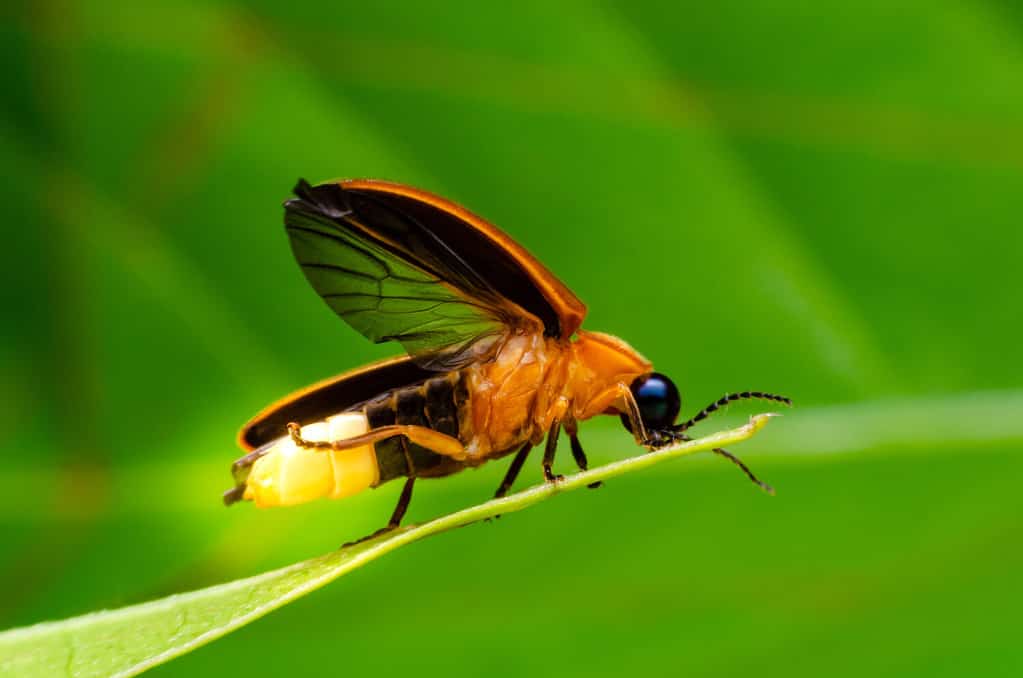
©khlungcenter/Shutterstock.com
The name is interesting in itself since most Southerners refer to fireflies as lightning bugs, an article we’ve delved into recently. Regardless of the name, fireflies are primarily out and about in the spring months (Late May to early June in Tennessee).
Occasionally, Tennesseans get to see the very rare synchronous display that fireflies are known for (mostly in the Smokey Mountains). Fireflies are flying beetles that use bioluminescence both as a mating pattern and as a warning to other fireflies. For instance, the synchronous displays are primarily a warning to female fireflies that if they see a light that’s out of sync, it’s a potential predator.
Fireflies produce their internal light by combining enzymes, luciferin, luciferases, oxygen, calcium, and ATP (adenosine triphosphate). Once these chemicals combine, they create bioluminescence, a source of endless entertainment for people since the dawn of time.

2. The Honeybee
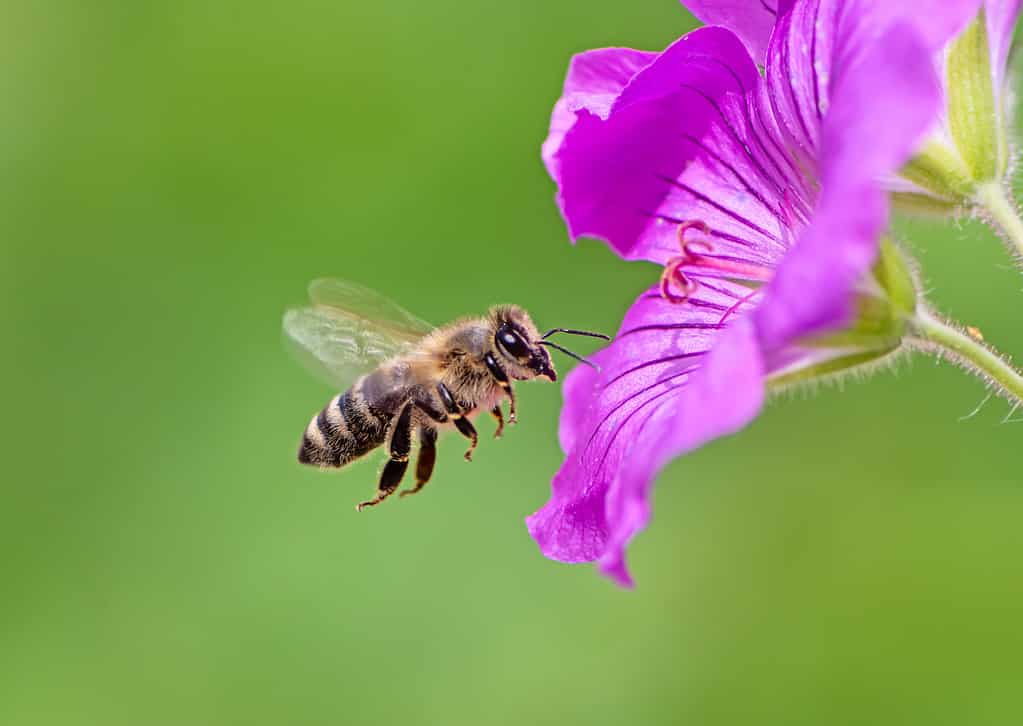
©iStock.com/manfredxy
Honeybees are undergoing a bit of a crisis these days, which could be very detrimental to every living thing on planet Earth. There are a number of things combined to devastate the honeybee population, including parasitic mites, extreme weather events, land usage, and more.
While Tennessee adopting the honeybee as a state symbol doesn’t help the honeybees directly, it does help them by drawing attention to them in the first place. Honeybees are a highly social and disciplined species. They build, protect, clean, and gather resources for the hive and for their queen.
The worker honeybees are the ones people mostly see. They are all female and cannot reproduce. The queen bee is also a female and she can reproduce. Her responsibility is to lay eggs and create an entirely new generation of bees to continue the process.
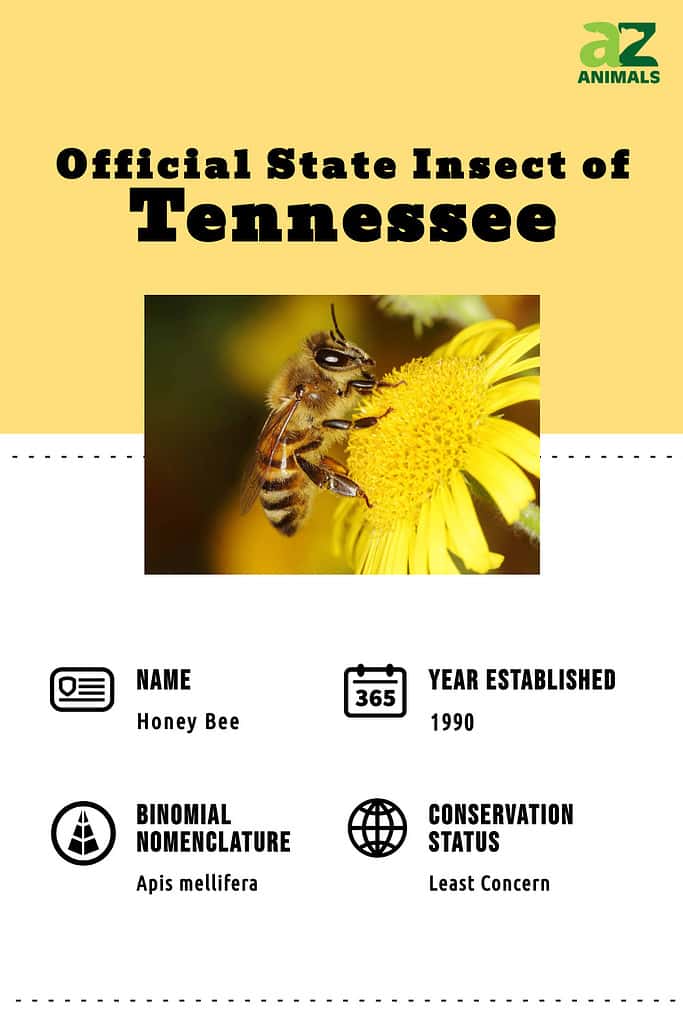
3. The Ladybug
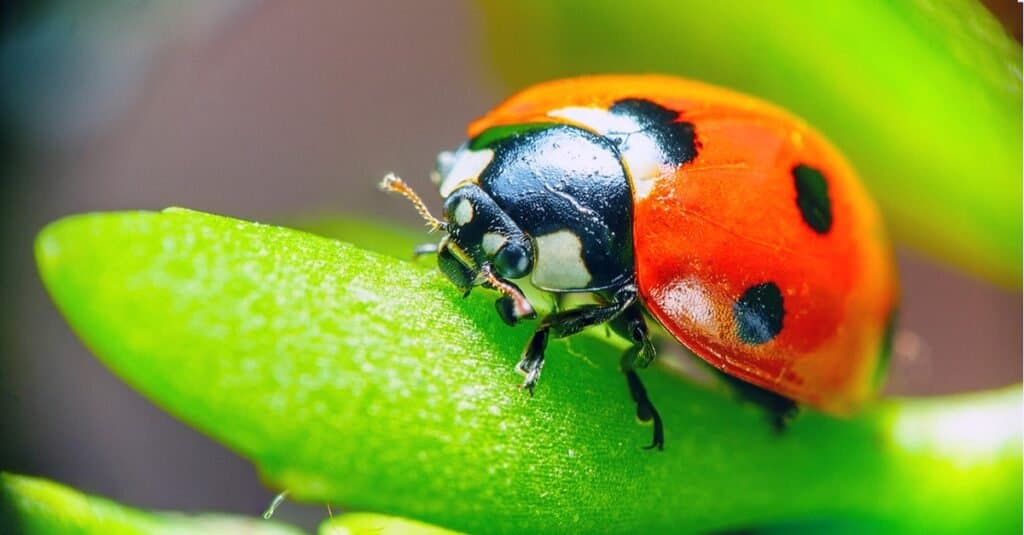
©Mironmax Studio/Shutterstock.com
Another of the official Tennessee state insects is the ladybug, probably one of the most instantly recognizable insects in America. Ladybugs, like fireflies, are small beetles that typically feature round, red wings with a number of black spots. There are 6,000 species of ladybug and many of them look like traditional ladybugs.
Also known as lady beetles or ladybird beetles, ladybugs are excellent garden beetles because they consume other bugs, some of which are a danger to garden flowers, fruits, and vegetables. They usually lay their eggs on the underside of leaves where they remain, in a large (relatively) cluster.
The term “ladybug” is not a US invention. It comes from Europe, where farmers appreciated the ladybug’s ability to consume all of the insects eating their crops. Farmers called them, “beetles of our lady,” which was later shortened to ladybug.
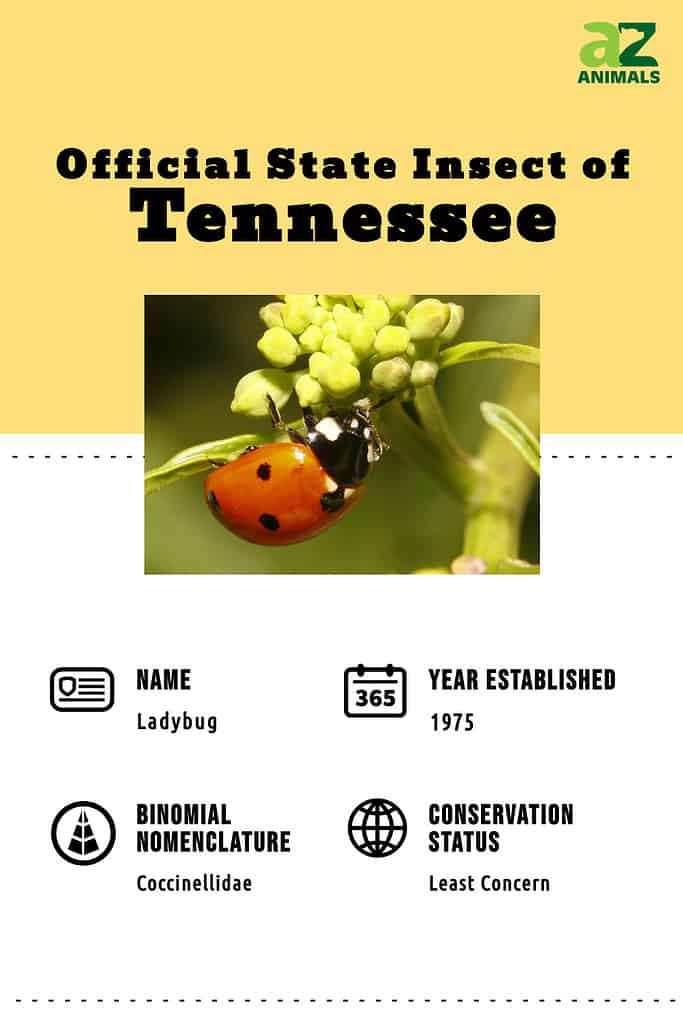
4. Zebra Swallowtail
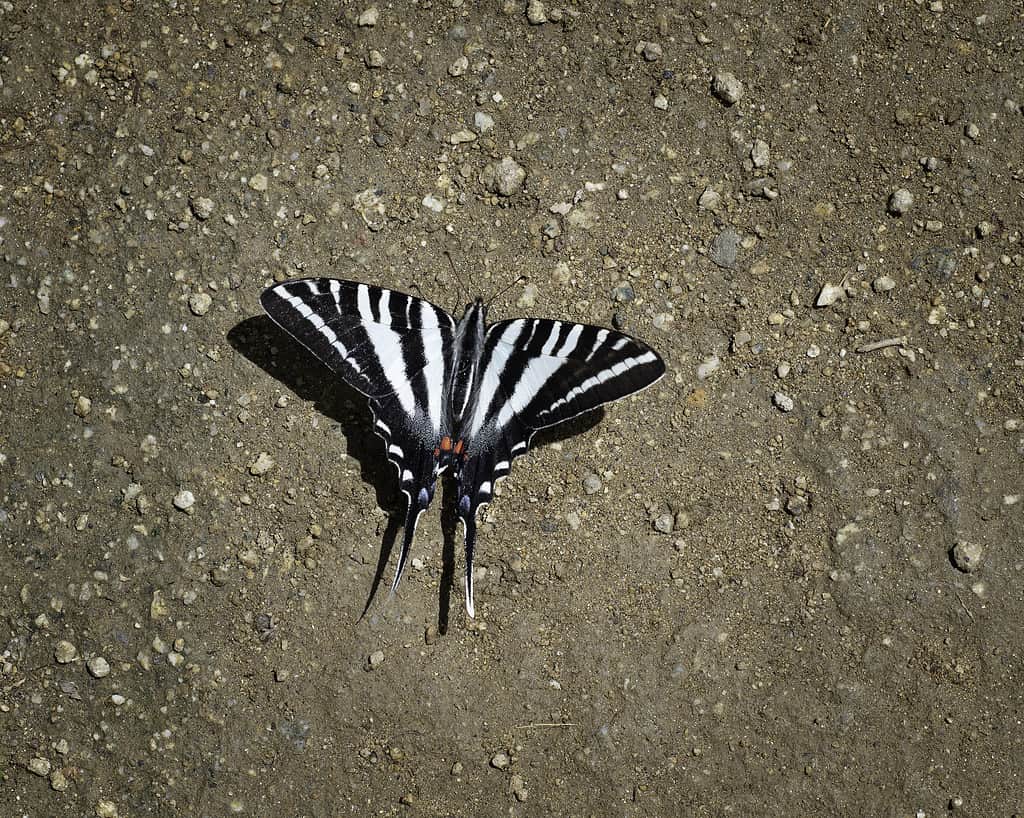
©iStock.com/GDMatt66
Tennessee decided to add the zebra swallowtail to its growing accrual of state insects back in 1995. It was the last of the state insects, at least for now. The zebra swallowtail is a butterfly and, as you might imagine, it’s black and white with the tell-tale stripes of a zebra.
As one of the four official Tennessee state insects, the zebra swallowtail is easily the most visually arresting of the bunch. Zebra swallowtails are predominately an eastern butterfly, meaning you will find them from Main to Florida but only as far west as Texas.
Zebra butterflies are highly attracted to the pawpaw plant. In fact, they like it so much that they are inextricably linked to the fruit and will start and end their entire life cycle near one. They will feed on the nectar from milkweed, redbud, and verbena plants, however.
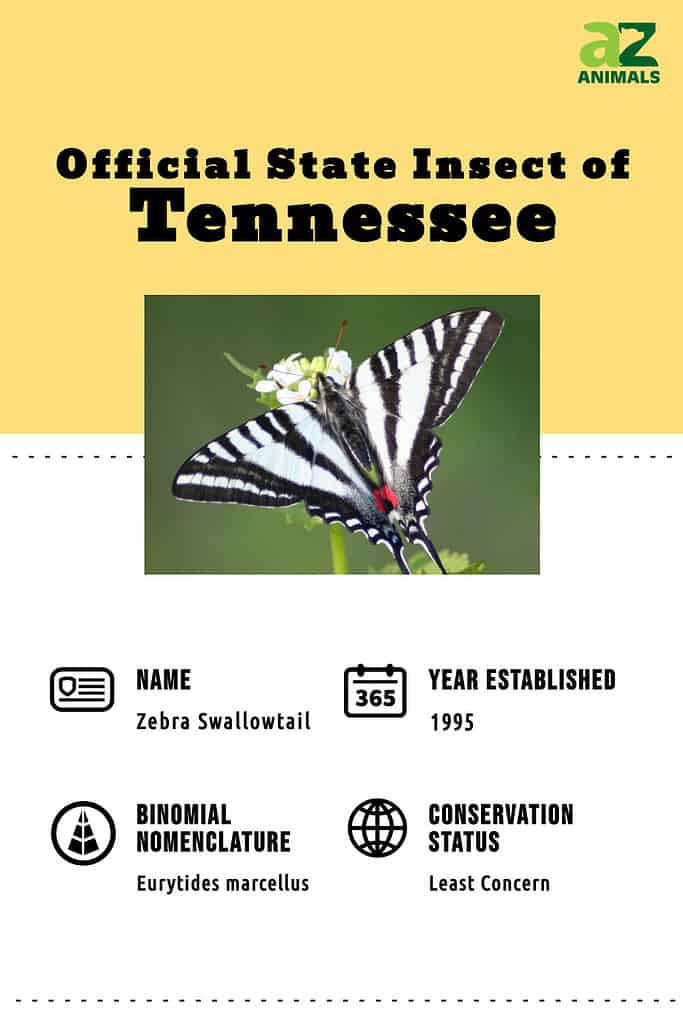
Why Did Tennessee Choose These Insects?
An insect doesn’t become an insect because someone in the state legislature happens to like it and sends it up the chain. While not always true, most state insect choices are made based on the insect’s beneficial capacity to the state.
Tennessee adopted the ladybug and honeybee based almost entirely on their immense value to the agricultural industry. Though there are only eight species of honeybee left, their contributions to America’s industry via honey and wax products are immense.
The agricultural value of a ladybug is huge. Since they consume many of the insects that farmers abhor, ladybugs are one of the most vital, natural pesticides in the world. Their name was given to them thanks to their pesticide traits and prayer to the Virgin Mary (the lady).
The firefly has no industrial or agricultural benefit, yet its entertainment value, going all the way back to the dawn of human history, is undeniable. The choice of the zebra swallowtail is in a similar vein to fireflies. It’s a stunningly beautiful, non-threatening, or damaging insect.
Final Thoughts on Official Tennessee State Insects
A single insect wasn’t enough for Tennessee and they chose these insects based on their contributions to the environment, industry, and agricultural aspects of the Tennessee economy. Just looking at state insects, it’s often easy to just assume the state chooses something pretty and moves on.
However, states choose their symbols strategically and with a lot more thought than most people realize. With that being said, Tennessee made some excellent choices, even if the zebra swallowtail and firefly were more of an aesthetic approach than anything else.
The photo featured at the top of this post is © Alexander Zavadsky/Shutterstock.com
Thank you for reading! Have some feedback for us? Contact the AZ Animals editorial team.






